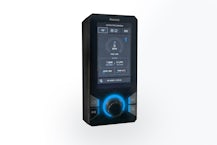- Clients
Interview with Roy Dykes: Understanding the Dangers Associated with High-Pressure Jetting
Talk to any experienced drainage contractor and they will be able to recount a jetting horror story or a near miss that almost resulted in a serious injury. While the dangers are a fact of life for engineers, the increased awareness of health and safety training and procedures is making the industry much safer than it once was.
With this in mind, we caught up with Roy Dykes, owner of training providers Jetmasters, to find out more about how accredited training courses are helping keep drainage engineers safe across the world.
Established by Dykes in 1988, Jetmasters has now grown to be one of the UK’s largest jetter training providers, offering a wide range of Water Jetting Association-approved and City & Guilds certified courses to engineers, including regular courses at Rioned’s Norfolk HQ.
When asked what factors led to the development of WJA-approved training courses, Dykes explains that his previous employers simply expanded a service that they had already been offering to their customers.
“Earlier in my career, I worked for a high-pressure pump manufacturer, and as a service to the clients, we offered training in the use of the pumps for jetting so that the drainage operators didn’t injure themselves.
“When the Water Jetting Association was formed (then called The Association of High-Pressure Water Jetting Contractors), the company I worked for joined and our training courses were adopted by the organisation.”
“Since the early beginnings of Jetmasters, training has taken over as the main product for the company and we have gone from strength to strength with many repeat customers,” he adds.
“In fact, our training courses have become so popular over recent years that I have increased the number of instructors from just myself to employing another three.”
Delivering sessions almost every weekday, and often on weekends, the company has seen a continued demand for its training courses, which are now an essential requirement for many employers in the industry. With an average of five or six people attending each course, Dykes estimates that his company has trained in excess of 1,000 drainage engineers over the last year.
With the training adapting to reflect changes in legislation and technological advancements within the industry, to remain registered with the WJA, engineers must retake the course every three years. Despite the challenge of constantly adapting training protocols, Dykes admits that he is pleased with the responses that he has received.
“Years ago, the training was aimed at operators who were using handheld equipment whilst today there is an increasing amount of automatic and semi-automatic equipment available,” he says.
“Because of this, our training has adapted to accommodate this trend with a view to a totally automatic way of working.
“We are seeing more and more companies taking their Health and Safety responsibilities seriously and asking us to train and re-train their operators, not just here in the UK but in Western Europe, Africa and the Middle East.
“The feedback has been positive from both attendees and their management so we’re confident that we have it about right.”
With water pressures as low as 100psi capable of piercing and cutting through skin, high-pressure water jetting is a profession that is not without its hazards. In 2020, a supervisor suffered a laceration to his thigh after being in the line of fire of a spray-gun lance jetting at over 250psi, while that same year, a UK company were fined £2 million following the death of a drainage engineer who had been struck by the end of a flexi-lance whilst cleaning pipework in Birmingham.
Injuries to drainage engineers are something that Dykes is all too familiar with, having come across many during his 40 years in the drainage industry.
“Eyes being taken out, limbs cut off, wounds that penetrate very deeply causing damage and infection, I’ve seen it all,” he admits. “They have usually been caused because operators have not been trained properly or they ignore the training, and when they are not wearing the correct PPE.”
“People don’t understand the power of water because it comes out of their taps at home at around 40psi quite safely and they use it for all sorts of things. However, add some power to it, up to 7000 psi, and it becomes a totally different beast.”
- Clients





